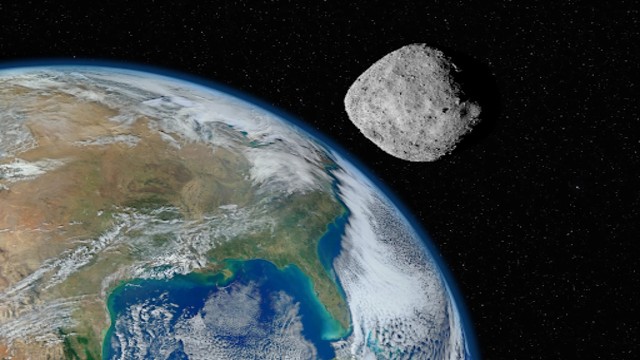
Scientists are closely monitoring asteroid 2024 YR4. (Illustration of an asteroid, image provided by NASA.)
The chances of asteroid 2024 YR4 hitting Earth in 2032 have gone up again. NASA now says the odds are 3.1%, or one in 32. This is the highest impact probability ever recorded for an asteroid, surpassing Apophis’ 2.7% risk in 2004.
On February 7, NASA estimated a one-in-43 chance of impact. That number increased to one-in-38 earlier this week before reaching its current level. Scientists say there is still no reason to panic but admit they cannot rule out a collision.
The European Space Agency (ESA) had previously given the asteroid a 1.3% chance of hitting Earth on December 22, 2032. This prediction came in late January. At the time, the International Asteroid Warning Network (IAWN) mapped out possible impact zones, including the eastern Pacific, northern South America, Africa, the Atlantic, the Arabian Sea, and parts of South Asia.
The asteroid’s size is still uncertain. Based on how it reflects light, scientists estimate it could be anywhere from 40 to 90 meters wide. The ESA has warned that an asteroid of this size could cause major destruction if it hits Earth. “An asteroid this size impacts Earth on average every few thousand years and could cause severe damage to a local region,” ESA experts said.
NASA, ESA, and other agencies are now using the James Webb Space Telescope to refine size estimates. Understanding its true dimensions is crucial, as the damage from a 40-meter asteroid would be far less than that of a 90-meter one.
Asteroid 2024 YR4 has been given a Level 3 rating on the Torino Impact Hazard Scale. This means astronomers are monitoring it closely, but it is still far from being a certain threat. A Level 8, 9, or 10 rating would indicate a definite and highly destructive collision.
If YR4 were to strike, it could cause severe blast damage up to 50 kilometers from the impact site. This would be similar to the Chelyabinsk meteor event in Russia in 2013. That meteor, which was only 17 meters wide, exploded in the atmosphere with the force of 500 kilotons of TNT. The shockwave shattered windows, injuring over 1,000 people.
The Chelyabinsk meteor became the most well-documented space rock entry in history. Dashboard cameras, security footage, and traffic cameras captured the fiery explosion as it streaked across the sky. NASA later found that debris from the blast traveled around the globe in just four days.
A chunk of that meteor was later pulled from a Russian lake in October 2013. Scientists hope to avoid a similar event by studying 2024 YR4 as early as possible.
NASA and other space agencies will continue tracking the asteroid’s path. They aim to provide more accurate predictions and determine if any action is needed to prevent a potential impact.















